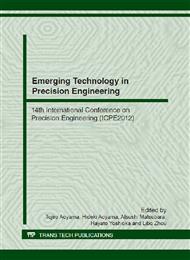p.1006
p.1012
p.1018
p.1025
p.1029
p.1035
p.1041
p.1047
p.1053
Control of Built-Up Edge Behavior by Chamfered Cutting Edge Preparation and Surface Modification
Abstract:
A chamfered cutting edge, which is commonly shaped in order to strengthen an edge of a cutting tool consisting of brittle material, easily causes an enhanced adhesion and a burr formation due to high compressive stress anterior to the edge. These problems lead to a detachment of tool material and a notch wear at depth-of-cut line, which would result in unexpected tool fracture. On the other hand, the edge shape promotes formation of a built-up edge (BUE) as a dead metal and can maintain it stably. Actually, the formed BUE is plastically extruded along to the chamfered edge and can prevent formation of the notch wear. In this study, basic experiments to reveal effects of chamfered tool edge preparation, such as chamfer angle, chamfer width and rake angle, on the BUE behavior were conducted. Additionally, the results suggested that the plastic flow in the BUE extrusion can suppress the adhesion if the extrusion is arisen uniformly. Therefore, attempts to control the BUE flow by chamfer surface modification were carried out.
Info:
Periodical:
Pages:
1029-1034
Citation:
Online since:
November 2012
Authors:
Price:
Сopyright:
© 2012 Trans Tech Publications Ltd. All Rights Reserved
Share:
Citation:


